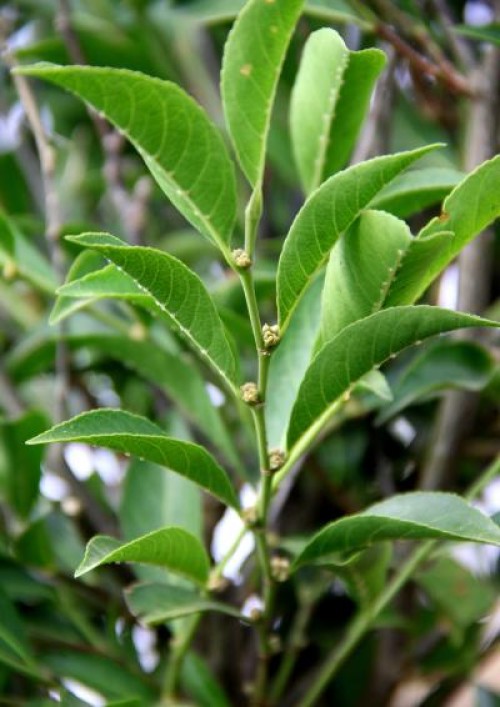菲律宾发现新植物物种以金属为食
菲律宾大学科学家Los Baños 等发现一种新的植物物种因为其具有一种罕见的生活方式,它以吃镍为生,在其自身没有中毒的情况下,它的叶片中金属累积高达18000ppm,作者说。这样的含量比大多数其他植物要高出一百甚至一千倍。这项研究结果发表在《PhytoKeys》期刊上。

Rinorea niccoLifera
这一新物种称为Rinorea niccolifera,反映了其高量吸收镍的能力。像这样高累积镍是一种罕见现象,生长在富含镍土壤中的植物物种中只有0.5-1%显示出这种能力。纵观世界,只有大约450物种已知具有这种罕见特性。
据该研究小组的领导科学家之一Marilyn Quimado博士介绍,这种新品种是在菲律宾吕宋岛的西部地区发现的,这一地区土壤中已知富含重金属。
“高累积植物具有发展绿色技术的重大潜力,例如,植物整治和植物采矿,”墨尔本大学奥古斯丁Doronila化学学院Augustine Doronila 博士解释说,他也是这一报道的合作者之一。
植物整治指的是利用高累积植物消除被污染土壤中的重金属。另一方面,植物采矿指的是利用高累积植物生长和收获以达到从植物芽中富含金属部位回收具有商业价值的金属材料。
原文摘要:
Edwino FeRNAndo, Marilyn Quimado, Augustine Doronila
A new, nickel-hyperaccumulating species of Rinorea (Violaceae), Rinorea niccolifera Fernando, from Luzon Island, Philippines, is described and illustrated. This species is most similar to the widespread Rinorea bengalensis by its fasciculate inflorescences and smooth subglobose fruits with 3 seeds, but it differs by its glabrous ovary with shorter style (5 mm long), the summit of the staminal tube sinuate to entire and the outer surface smooth, genErally smaller leaves (3–8 cm long × 2–3 cm wide), and smaller fruits (0.6–0.8cm diameter). Rinorea niccolifera accumulates to >18,000 µg g-1 of nickel in its leaf tissues and is thus regarded as a Ni hyperaccumulator.
作者:Snail

